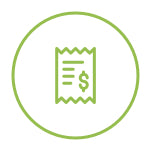Talk to anyone who has worked in the web industry for more than a few years and you’ll often hear that it’s changed — a lot. Today’s market is very different from the mid 2000’s when we could expect to charge companies handsomely for what amounted to a bunch of nicely designed fixed-width HTML templates.
Today, much of that work has gone in-house as large businesses realize “digital” is not a passing fad but something to take seriously. Meanwhile, at the other end of the market, many are taking the first steps into 'digital' via Facebook Pages and hosted CMS platforms. Consequently, agencies and freelancers are fighting over a diminishing market. To succeed you have to be different — and one way to stand out from the crowd is to specialize.
Thankfully, the popularity of ecommerce continues its upward trend. As a result of this growth, web designers and front-end developers with a solid understanding of the ecommerce landscape are finding themselves in high demand. By specializing in ecommerce, web professionals are finding new (and profitable) ways to grow their businesses beyond traditional design and build services.
By specializing and becoming an expert in ecommerce and it’s related areas, you’ll be able to offer a wide range of services to your ecommerce clients long after the launch of their online store. Here are 11 services that you may wish to consider offering in your next ecommerce proposal.
 Customer support
Customer support
In the five-part podcast series The Ecommerce Customer Lifecycle, my co-host Ross explains how his business Growth Spark helps their clients with the entire ecommerce process — from initial concepts right through to encouraging repeat business.
Customer service is a huge part of this lifecycle and majorly important for any business. Unfortunately, many businesses aren’t set up to deal with customer enquiries in an efficient manner. Advising a client on how to implement an effective customer service platform is a great upsell for any ecommerce project.
There are a number of 'helpdesk' solutions on the market, but the one I return to — especially for those starting out with ecommerce — is HelpScout. HelpScout is an easy to configure and elegantly simple-to-use help desk application which is free for up to three users.
Whilst I prefer the familiar inbox style web interface, it's just as easy to use HelpScout from within an email client. Centralizing communications also enables your client to have multiple users handling queries. There are also a number of helpful features which allow you to assign and monitor queries from start to finish.
HelpScout also has its own API. As a result, there are a number of third-party add-ons, including a Shopify integration which allows you to see a customer's order history right from within HelpScout. With one glance you can see if they are your best, or worst, customer. It also offers the ability to create email templates, making it easy to reply personally to the same enquiry time and time again.
 A/B testing
A/B testing
I often hear successful designers working in ecommerce say that the handover of the store is really just the beginning. This is the point where you can start to offer A/B (also known as split) testing. Whilst you will of course present your client with a well thought-out design, there’s always an opportunity to offer your services to make it even better.
A/B testing allows you to test hypotheses in your design. For example does the “Add to Cart” button work better below or above the price? By using online tools such as Optimizely and Visual Website Optimizer, you are able to run tests to determine which button is used more and then make the recommendation to permanently move it.
There are many factors that you can offer to test, including colours, layouts, type, and tone of voice. By working with your client and getting a better understanding of their store’s visitors, you can tweak and perfect the design to help them increase their sales.
This is one of many services you could wrap up into a monthly retainer for the client. By offering post-launch services, you’ll become even more indispensable.
You might also like: How A/B Testing Will Make You a Better Web Designer
 Live chat
Live chat
Another common feature found on ecommerce sites today is 'live chat.' Services such as Olark have made it ridiculously simple to implement this facility on any ecommerce site.
As well as offering the option to brand the chat box in the store’s colour scheme, there are a number of other appealing features. These include the ability to only interact with visitors on certain pages (the cart being a great example), integration with popular CRM tools allowing conversations to be logged, and advanced analytics.
Of particular interest to ecommerce clients is the 'cartsaver'. This feature lets you see what's in a customer's cart in real time, enabling your client to reach out to upsell or answer questions before the customer leaves the cart page.
As well as offering to implement the system, having access to the data made available via the dashboard will give you insights into potential improvements to the store.
 List building
List building
You'll often read that 'list building' (another term for collecting email addresses) is one of the best marketing tools for ecommerce sites. Having a list of opted-in subscribers who have given permission to be contacted is a great way of letting your customers know about new products and services. Therefore, having a simple way to capture email addresses is another service you'll want to offer. Thankfully, SumoMe offers us a number of ways to integrate these forms into any site.
SumoMe is a suite of free (with premium upgrades) tools that help grow traffic and build email lists. These range from apps to help you analyse the popularity of your content and easy ways to share images (great for ecommerce sites), right through to numerous ways to entice visitors to sign up for a mailing list. I recommend ListBuilder and ScrollBox as starting points.
The SumoMe set of tools will not only help your clients market their stores more effectively, but it will also give you valuable insights into how their site is used. Having access to this data will feed into your A/B testing recommendations.
 Email campaigns
Email campaigns
Of course, once you have implemented the sign up forms using a tool like SumoMe, you can offer to design their responsive email templates for use in email marketing services.
Whilst many email delivery services offer great out of the box templates, there’s nothing like the personal touch. By bringing the store’s brand to all electronic communications, you will not only showcase their values but also, I believe, show a level of care and thought that makes that company stand out.
As well as designing the templates you can also offer to manage their campaigns too. As intuitive as these online tools are they are often daunting for clients - taking away the pain points is a great way of helping your clients.
 Transactional emails
Transactional emails
Following on from the more personal email newsletters we have transactional emails. Every sale generates a number of these auto-generated transactional emails — the “order confirmation” being the most common one.
Transactional emails don't have to be boring. In fact, every email a store sends is a great way of interacting with a customer and serves as another extension of the stores brand. Sadly, the design of 'transactional emails' are often overlooked in favour of the system's default templates.
The good news is that Shopify allows you to customise all auto-generated outbound emails – both in plain text and HTML. From copywriting to the design and layout of the HTML versions, being able to advise your clients on how best to use notification email is a great opportunity to work longer, and more profitably, with your client.
You can spend time crafting your own responsive email templates (or re-use the templates you designed for their newsletter campaigns), or you could choose to use a service like Receiptful, which aims to make 'supercharging' your receipts a quick and painless endeavour.
Should you wish to hand-craft your templates, I strongly recommend Lee Munroe's suite of open-source email templates as a great starting point.
You might also like: 5 Essential Emails to Design for Every Ecommerce Site You Build
 Product photography
Product photography
How many times have you gone to an ecommerce store and clicked on a photo expecting to get a super hi-res image of the product only to find the thumbnail appear in a lightbox? I am sure I am not alone in finding this annoying. Great product photography is key to giving buyers as much information about the product as possible.
Unlike “bricks and mortar” stores you can never feel, hold or try on a product online. It therefore goes without saying that the product must be represented as well as possible despite these limitations.
Great product photography is a differentiator. Having photos of the product from multiple angles, in different colours (if applicable), in situ (think of a watch on a wrist or a jacket being worn), and compared to other objects for size will help the buyer make a more informed decision - a more informed customer means they are less likely to return the product. Thankfully Shopify now offers the ability to associate an image with each product variant too.
These days, being able to create great product photography doesn’t require a lot of effort, or dare I say, exceptional skill. Armed with nothing more than a smartphone, a few key apps, and a small setup comprising of a white background and tripod you are able to take great product shots. Holly Cardew wrote a very useful article called “Add Product Photography to Your Service Offerings With These Tips” which outlines all you need to know to get started.
Alternatively you could collaborate with a local photographer and take a percentage of their fee.
 Point of Sale / Pop up Shops
Point of Sale / Pop up Shops
The rise of the “Pop up Shop” has enabled retailers to sell in person as well as online thanks to things like Shopify PoS (Point of Sale), it’s now easier than ever to take your clients store out of the cloud and onto the street.
Temporary shops represent a great opportunity for web professionals. By understanding how to implement PoS, you’ll be able to offer your advice on how they can best implement their store strategy. It’s another great opportunity to take the technology barrier away for your clients.
Additionally, it’s another opportunity for you to dust off your print design skills and help create banners, pricing labels, leaflets, and more.
 Reporting
Reporting
Whilst many of us love charts, graphs and spreadsheets, they are not for everyone. Offering to create a custom weekly or monthly report for your clients is a great service to add to your monthly package. The report could include any (or all) of the following:
-
Best selling products
-
Least popular products
-
Revenue by week/month
-
Exceptionally popular products for that period
-
Site traffic stats including key referrers, most popular pages, causes for concern
-
Twitter/Facebook mentions and noteworthy interactions
-
Results of A/B tests run that month
-
Recommendations for following months tests
-
Social shares relating to the site
-
Seasonal advice - especially around holiday seasons (Black Friday / Cyber Monday)
-
New app recommendations that could benefit the store
The good news is that most of this date can be collected automatically, making piecing the report together not too labour intensive.
You might also like: 5 Simple Google Analytics Reports You Should Create for Every Client
 Social Integrations
Social Integrations
There’s no escaping the importance of “social media” when it comes to ecommerce. It’s hard to ignore when you frequently read how stores have “blown up” thanks to a tweet from a key influencer.
Twitter, Facebook, Instagram, and Pinterest are four popular channels that you can help your clients with. For example both Twitter and Facebook offer the ability to create custom headers and avatars. Again, this represents another opportunity to extend the brand consistently across platforms.
You can also help with Facebook integration. Thanks to the recently announced Shop section for Facebook, it’s now easy for sellers to showcase their products directly on their Facebook Page. They can then choose to direct shoppers to their store for payment or to checkout without leaving the Facebook site or mobile app.
Creating Instagram friendly photos for all products is another potential upsell for your clients. If you are in the US and Canada you can also help your clients push their products to Pinterest and Twitter using the Shopify Pinterest integration and the Shopify Buy Button for Twitter.
I firmly believe that multiple “channels” are the future of ecommerce. Being able to help your ecommerce clients get to grips with different social media platforms is a great opportunity to help them stand out from the crowd.
 Offline branding
Offline branding
So far we’ve looked at a number of ways you can extend your ecommerce projects from a digital angle. If you’ve been involved in the branding of the store you may wish to consider lending your design skills to the number of offline materials a successful store employs including:
-
Packing slips
-
Shipping labels/stickers
-
Printed receipt
These often go overlooked but by taking the time to extend the brand to printed material will also show attention to detail and extend the stores brand beyond the screen.
Conclusion
I often say to people I meet at events and conferences that ecommerce is a golden opportunity for web professionals. We may have dived head long into this industry out of our love of design and code, but ecommerce allows us to put that knowledge to great use by helping our clients build profitable businesses. And by extending the working relationship beyond the store launch, you’ll benefit from a long-term client relationship. It’s a win win.
Read more
- Freelancing 101: How to Market a Small Business
- Kickstart Your Speaking Career: How To (Metaphorically) Drop The Mic
- 4 Overlooked Tactics to Find New Clients Offline
- The Secret to Persuading Clients to Hire Your Design Firm
- The Importance of Investing in Your Own Website
- Why You Should Stop Responding to RFPs and Do This Instead
- The Counter-Intuitive Approach to Getting Your First Client

 Customer support
Customer support A/B testing
A/B testing Live chat
Live chat List building
List building Email campaigns
Email campaigns Transactional emails
Transactional emails Product photography
Product photography Point of Sale / Pop up Shops
Point of Sale / Pop up Shops Reporting
Reporting Social Integrations
Social Integrations Offline branding
Offline branding